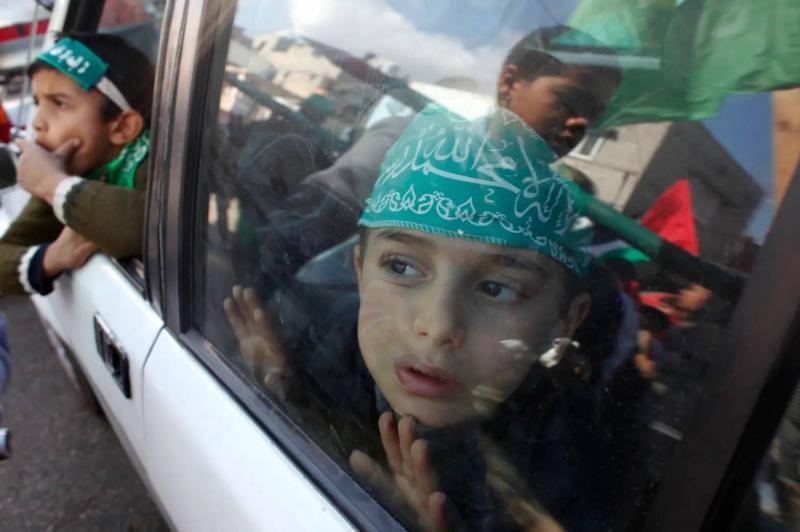Lenin, during World War I when he attended the "Brest-Litovsk" Agreement signed in 1918, described it as humiliation and shame, a dose of poison, after the Bolsheviks failed to sustain themselves in the conflict and exhausted vast human resources to no avail. Similarly, after eight years of the Iran-Iraq war, Khomeini referred to the ceasefire as swallowing poison, given the grand slogans he had raised at the war's onset. After October 7, Hamas elevated its rhetoric beyond human capability, yet the sequence of events did not correspond with the desired material facts.
A crucial question arises: what connects these three scenes—Bolshevik revolution, Iranian revolution, and the military wing of Hamas? The answer is simple; these three scenes represent some of the most problematic theories of the past century on both an international and societal level, affecting the daily lives of millions of people, and they still do.
In the context of this equation, Russia and Iran had vast geographies behind their armies on the battlefield, with both countries remaining intact with all their components. In contrast, in the case of Hamas, there was no geography or entity to rely upon; Gaza's geography is very small and people move about this limited space without luggage or any means of travel or permanence. Therefore, Hamas, which sees itself as representing the Sunni street in the equation, believes its survival is a necessity without escape from the harsh reality, regardless of the devastating human losses. Consequently, it naturally gravitates towards prioritizing the movement's interests first and seeking its own survival at the expense of civilian lives, as Khaled Meshaal expressed in his speech at the Al-Zaytouna Center, when he considered these losses as the price of war.
The response of Hamas to the plight of civilians in Gaza and the inclination toward negotiations ensuring the safety of civilians—not the movement and its future—remains the true poison that Hamas would swallow if it aligned with them. How can a movement that considers itself the last bastion of the nation respond to the interests of civilians if it views that as leading it from its small geography into oblivion? This is the poison Hamas has rejected.
The second poison the movement fears is its internal structure, especially concerning its political and military leadership, which has faced severe jolts since the movement's inception. The division between Hamas's internal and external factions is old, arising from a sharp disagreement between leader Mahmoud al-Zahar and the movement's political bureau abroad, a conflict that exists even within the external political bureau amid a rivalry between the factions of Mousa Abu Marzouk and Khaled Meshaal. The daily events in Hamas's offices in Damascus clearly narrate the story of two separate worlds that only meet during political conferences and public discourse.
Moreover, the issues of deep internal conflicts in Gaza after 2007, and the extent of Israeli infiltrations into Hamas, have been significant. Hamas lost Saeed Siyam, who was the Minister of the Interior in January 2009, when Hamas accused a member of its Supreme Security Committee of treason. Subsequently, it executed its spokesman Ayman Taha on charges of collaboration. Contrarily, other sources indicated Ayman Taha was involved in internal conflict, leading to his death. Additionally, the fleeing of a commander of the frog unit to Israel in July 2020, and the escape of a commander of a special missile unit in the same year, where the Independent reported that he was tortured in Hamas prisons prior to fleeing, are complex issues difficult to clarify, especially against the backdrop of families denying accusations and reasons.
Then there was further speculation about the rift between Hamas's internal and external factions, and the absence of Sinwar from the scene, amid attempts by the movement's political bureau to disclaim knowledge of events post-October 7, yet later exalted it. This continues to reveal the political turmoil characterized by contradictory messages.
This is accompanied by Israel's announcement of contact with Palestinian families regarding the management of a city in the besieged northern Gaza region, which heightens the climate of terror within the movement, particularly with reports from northern Gaza indicating despair has reached a peak. At least internationally, it has been stated that Hamas's political role in Gaza will not be available post-war.
Thus, from Israel's perspective, partial administration in northern Gaza is feasible temporarily, though it is not recognized by the international community, which considers the Palestinian Authority as part of any comprehensive agreement. The discussion about this administration implies greater matters than simply separating northern Gaza from the south, which Israel initiated by paving the path separating the two areas, seen as delineating new borders on the ground. This implies that while Israel might accept the presence of Hamas in southern Gaza for an extended period, it would be without borders, transferring the conflict with Hamas into an internal struggle within a densely populated environment.
At this juncture, Hamas returns to the topic of negotiations once again, after the initial and final bargaining equation has remained focused on Hamas's future, neglecting the future of over two million people left vulnerable. The commonality in the world of ideology is that the value of a person and their presence is merely symbolic, and what serves the ideology materially is what is required. With the absence of this loyal aspect to the governing ideology, the individual becomes a heavy burden, and their loss is not considered valuable if that loss serves to preserve the group upholding the ideology and its banner.




